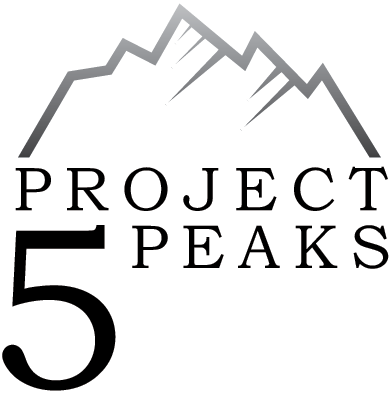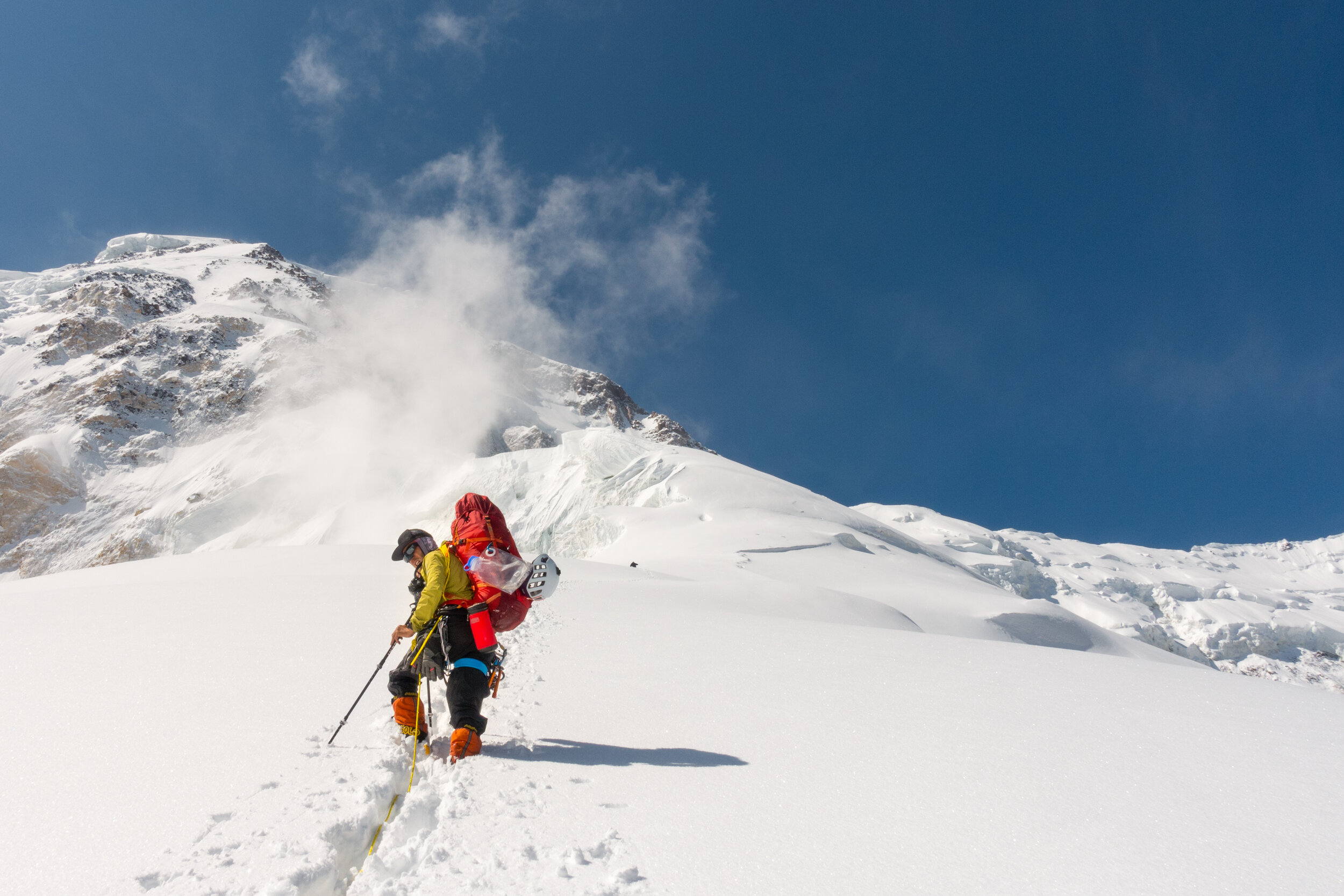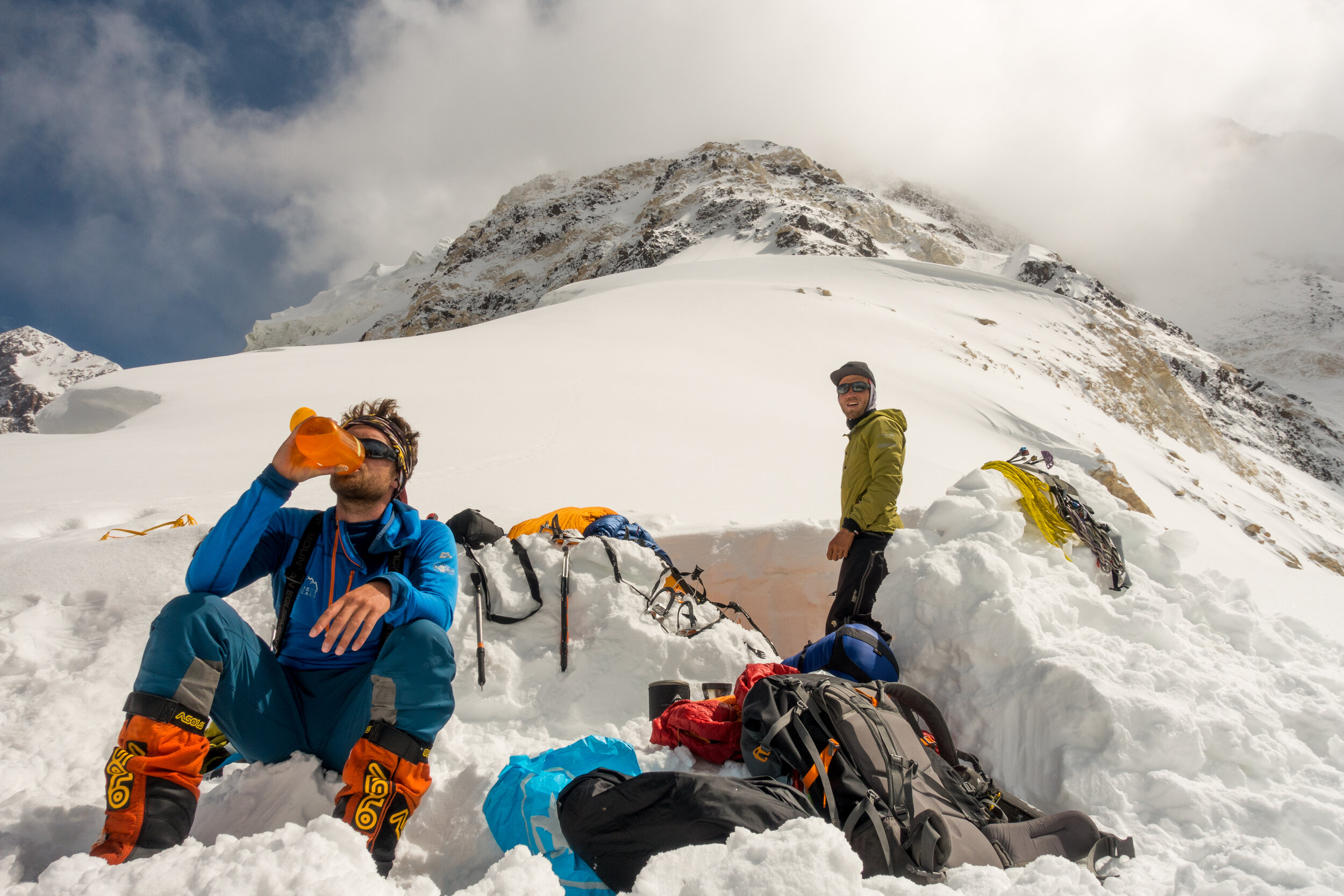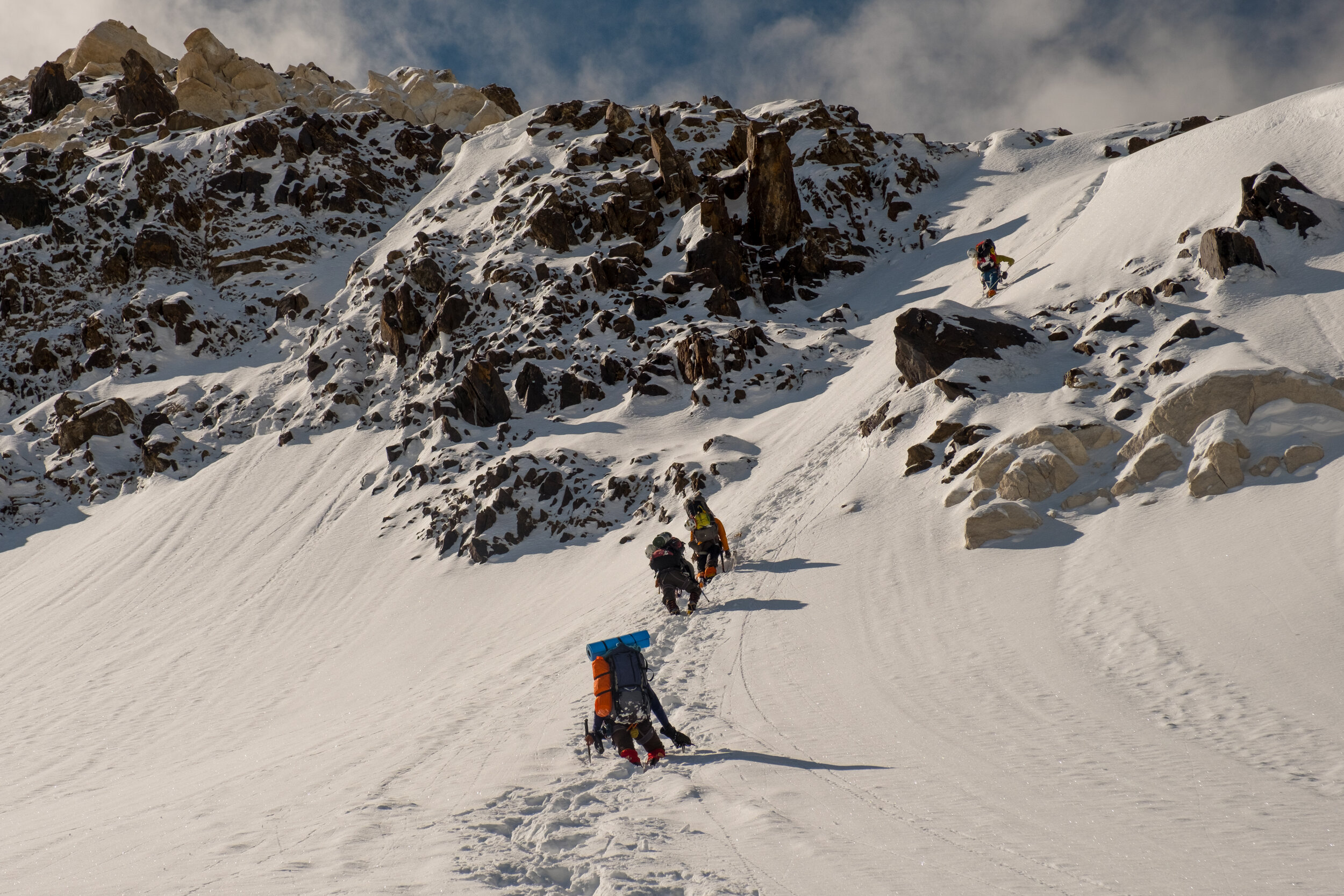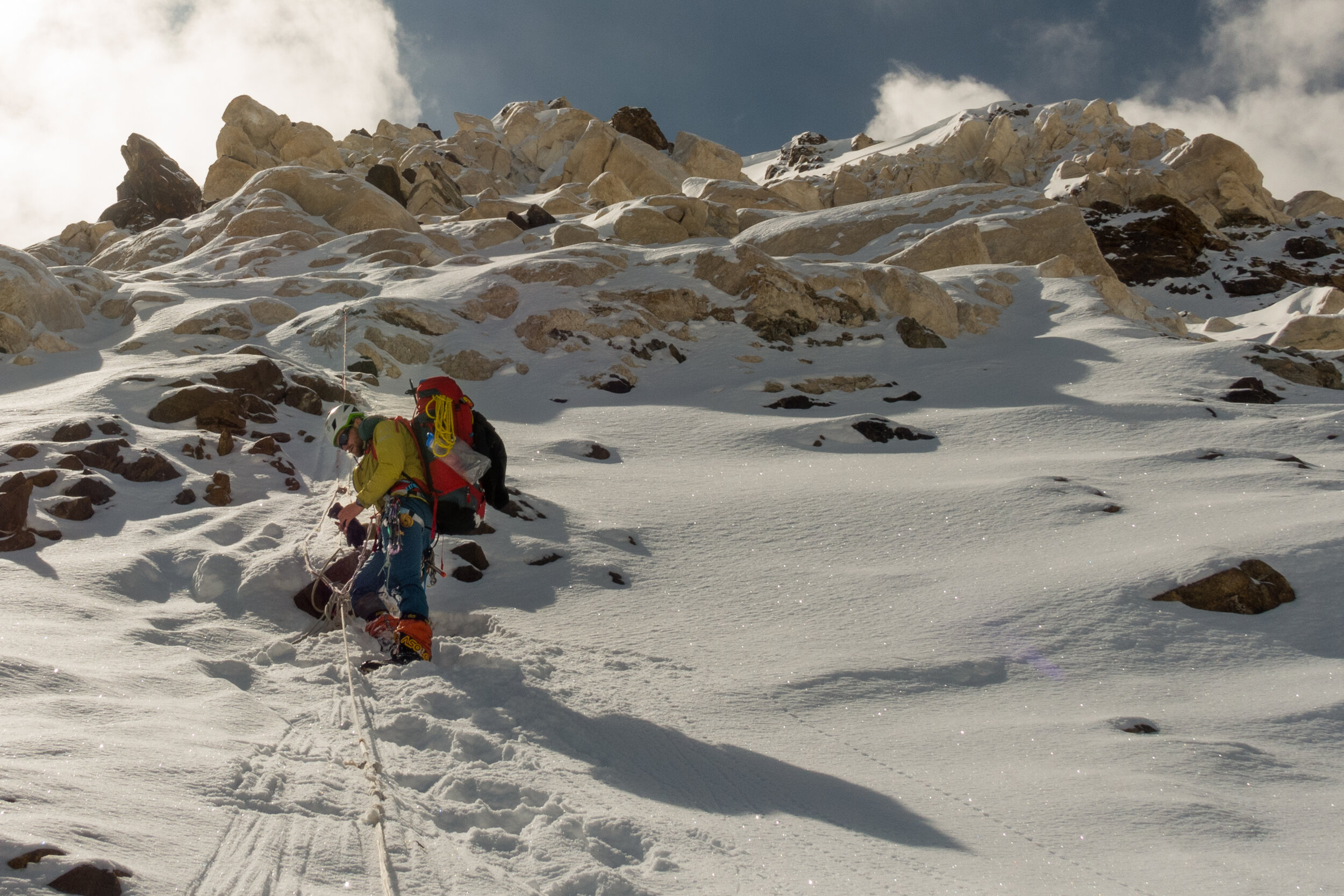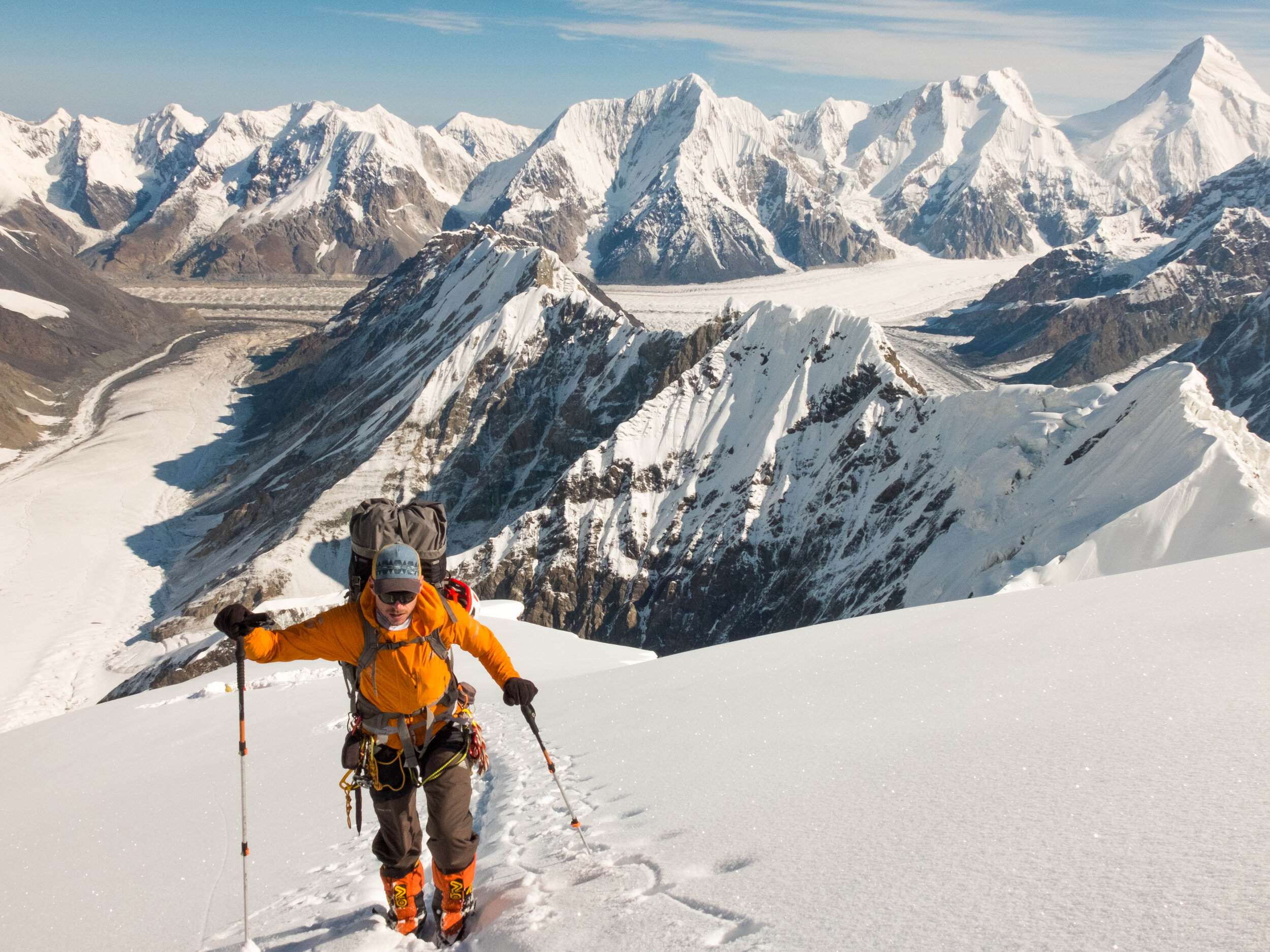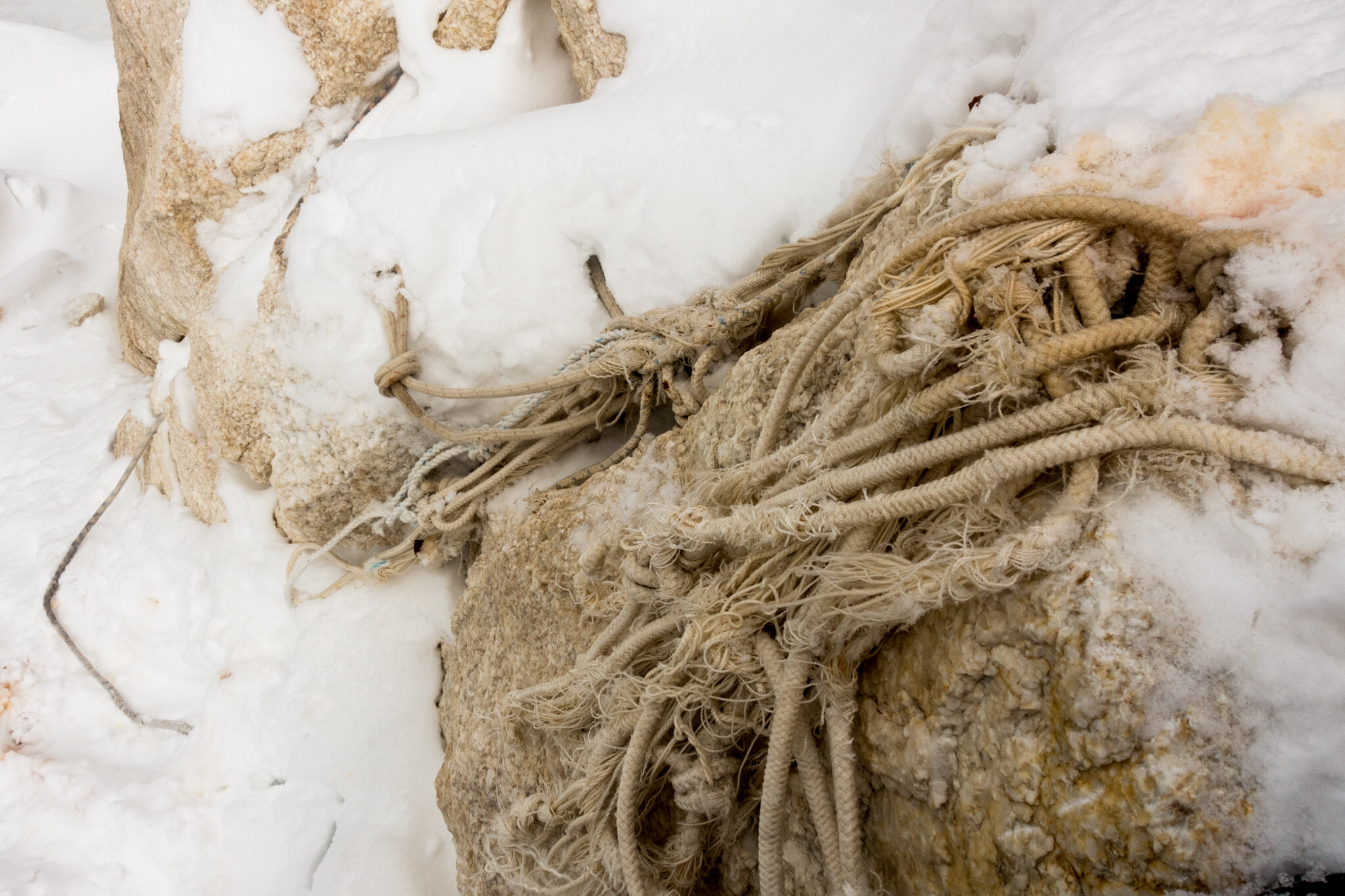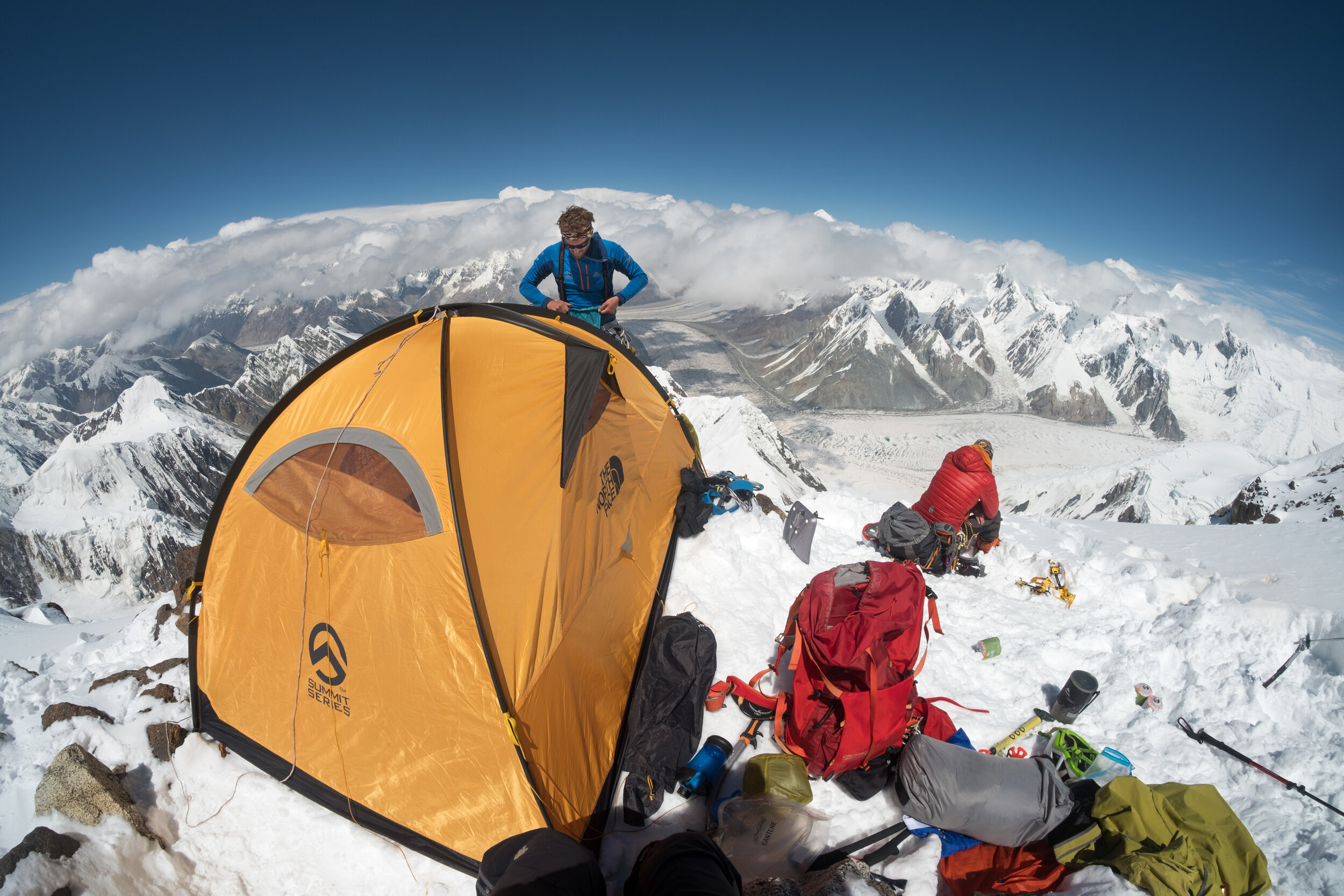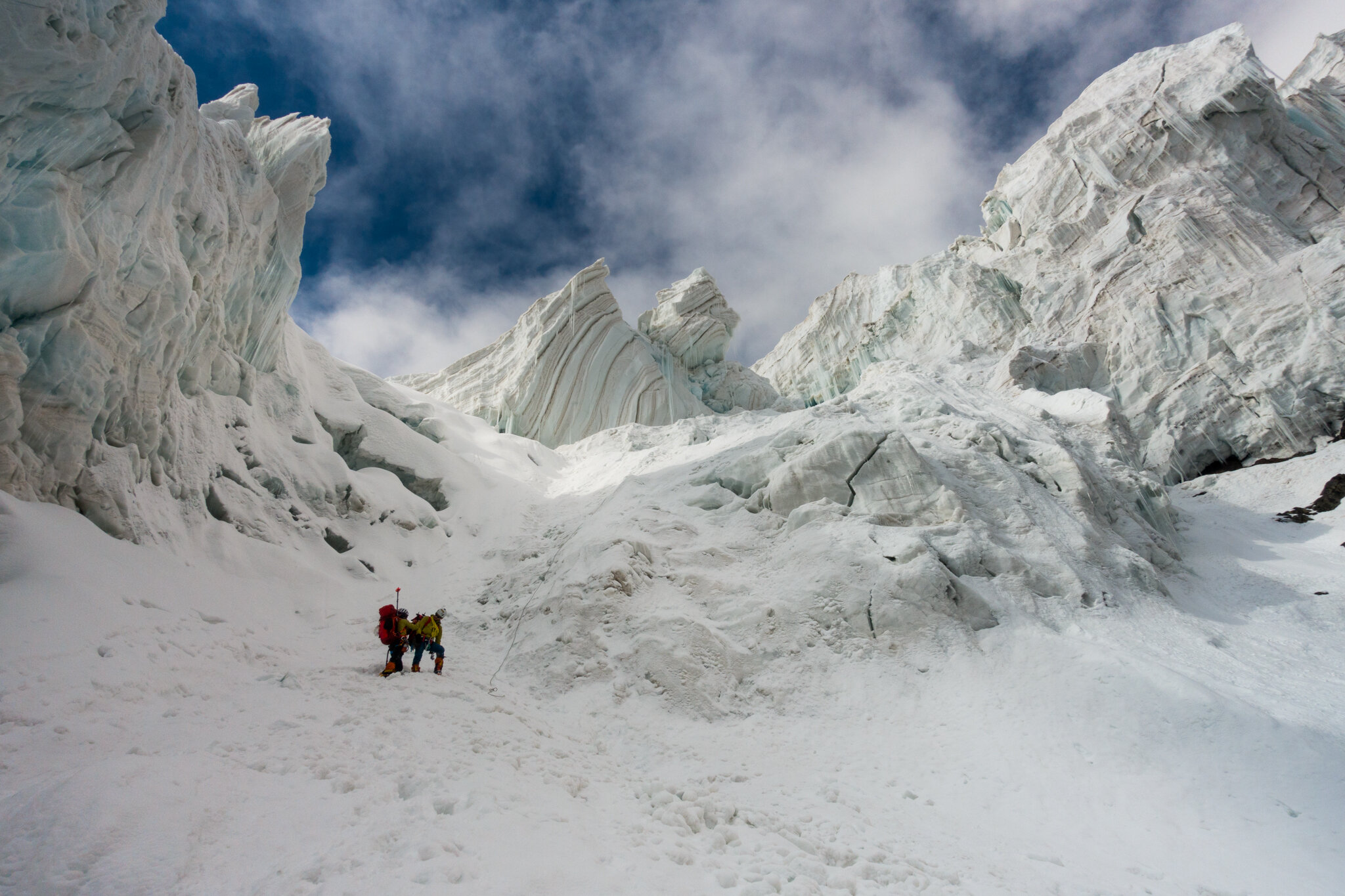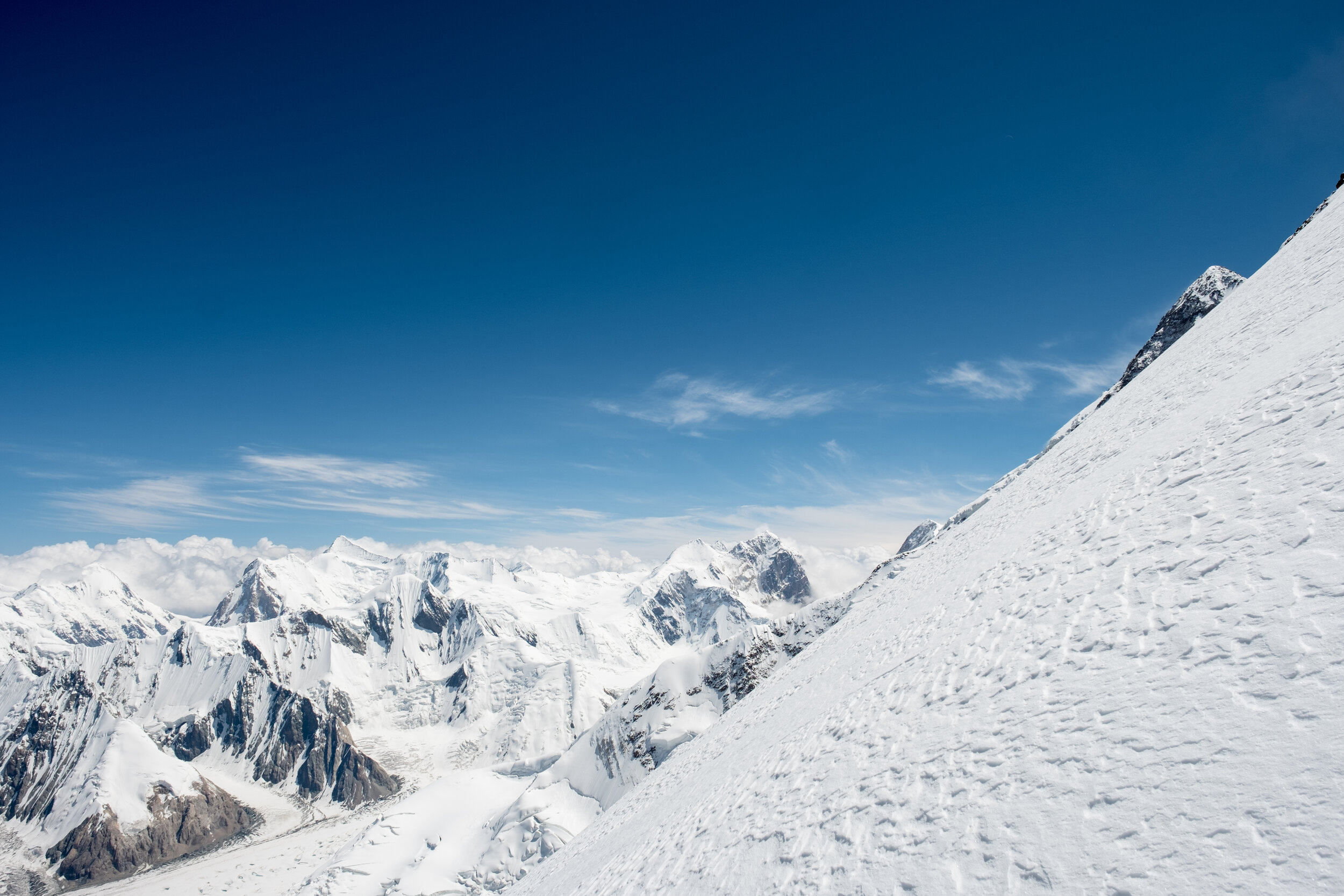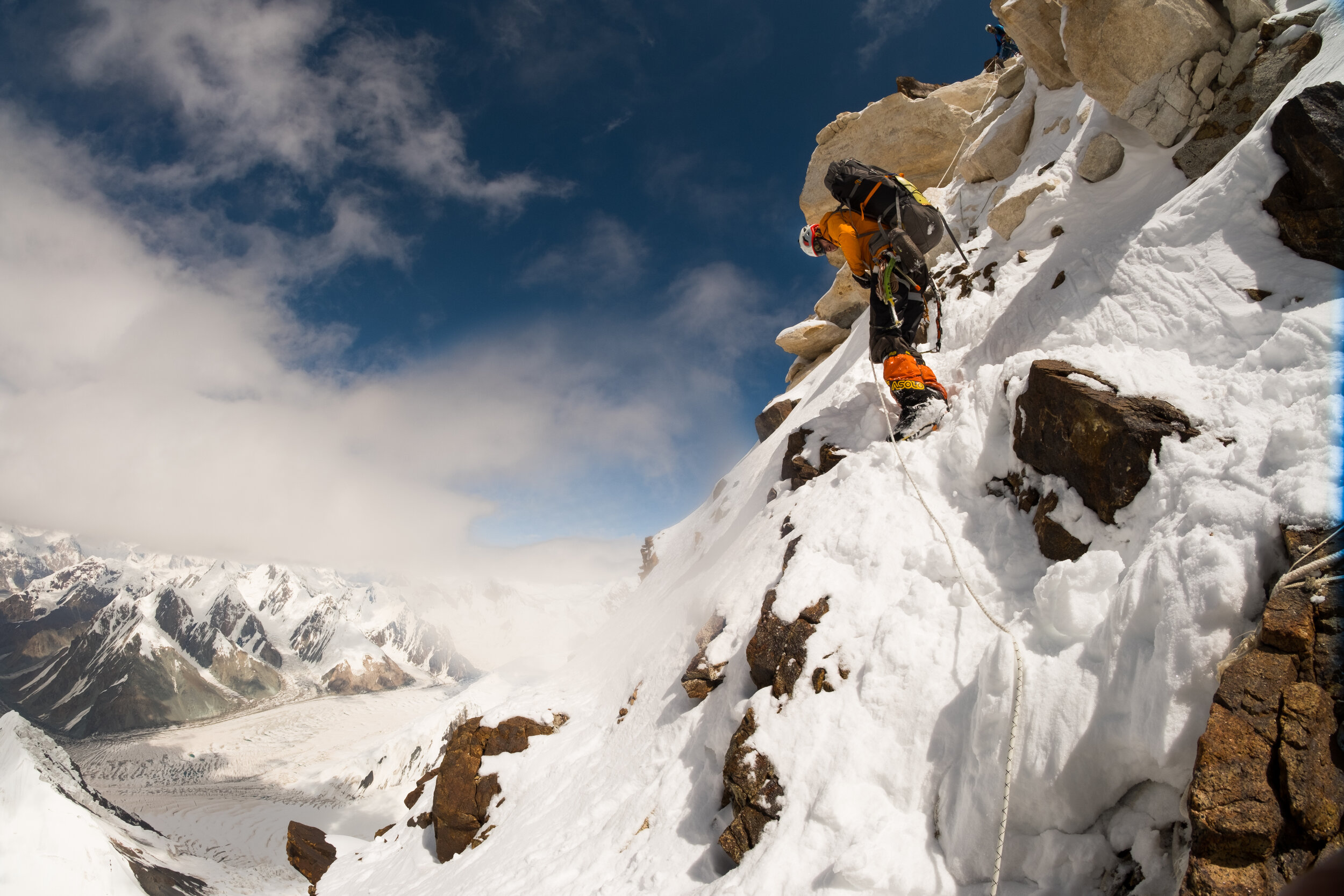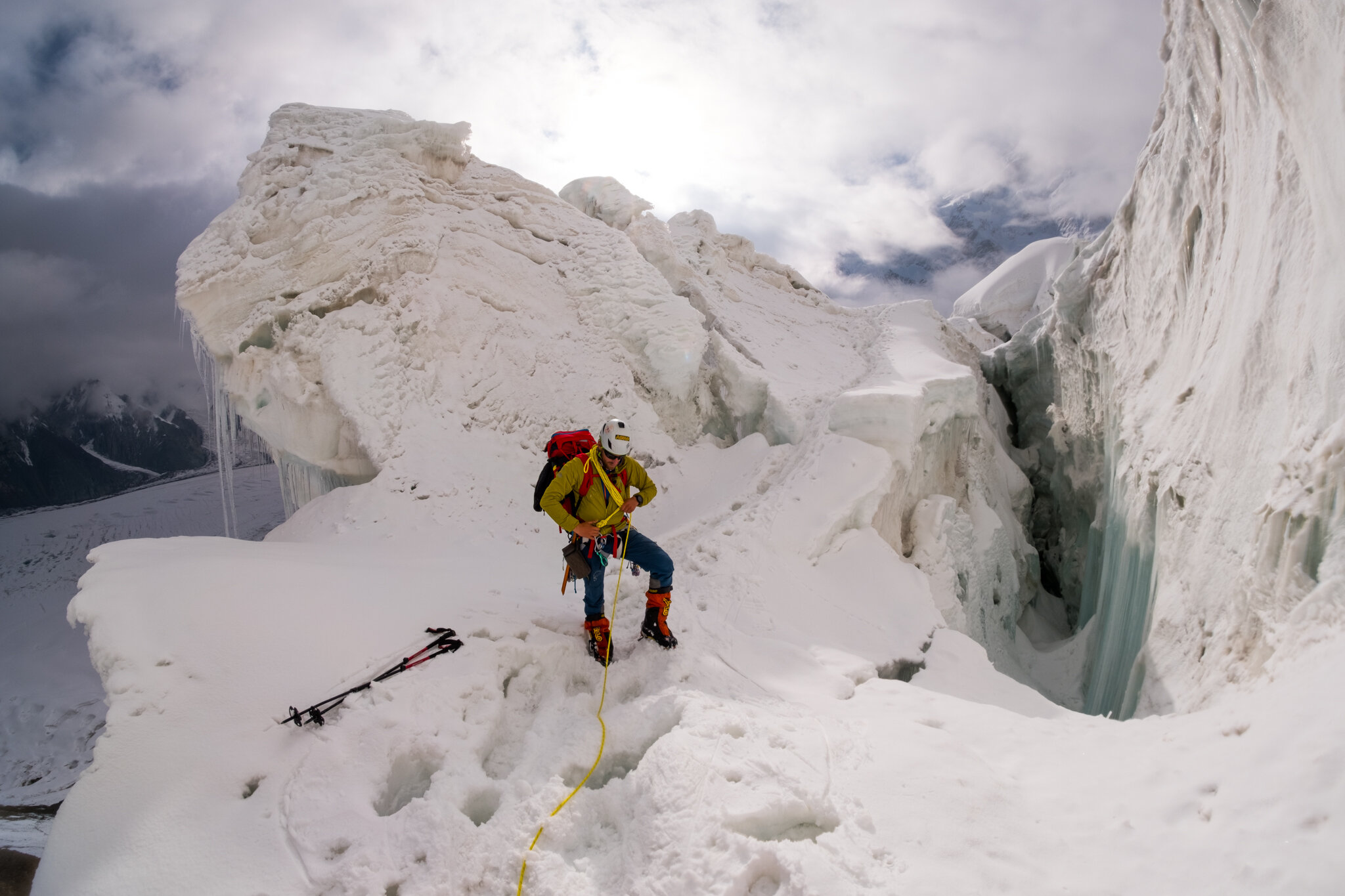Pobeda Part II - ‘getting high, saying bye’
Text by Gijs Schuurhuis
Photos by Martin Vorel
After a night in C1 we packed our gear and headed up. During the previous afternoon we got accompanied by a team of two and this morning we got into a little game of cat and mouse. They were the first to leave camp and as we put in the track the previous day, we thought that they could put in the energy today. However they were slow and the snow was deep. They kept stopping and looking over their shoulders, it didn’t take long before we caught up with them.
We considered just hanging around and let them continue, but that’s not really what we were here for. Snow conditions where awful, deep and soft, which made putting in the track more energy consuming than we anticipated. However in a great display of stamina Martin took us up to 5.600m. We were moving so fast that the Russians couldn’t keep up with us, even though we left a track! Arriving at a flat area, covered from avalanche danger, we found a good spot and decided to call it a day. Above us we could see the steep rockface.
During the next day, as I made my way up the first fixed rope I was looking up and thinking that the climbing didn’t seem much more difficult than what we encountered two years ago on Khan Tengri. The exception being the fact that all rock was covered in 15 centimeters of powdery snow and the ropes where horrendously bad. As we made our way up to the yellow band (a steep marble rock band spanning from 5.900m to 6.100m) we encountered disintegrated tangled ropes from previous years. There were no new ones, so you pick the one that seems most solid, only to find out that that one is connected to another one that is connected to a rope which only has one inner string left. Even though you only use the ropes as a backup, it made Allert and me pretty anxious – Martin on the other hand seemed to have the time of his life.
We navigated the yellow band and at about 6.000m we got to a upper snow field. On other mountains you have spots where it’s possible to put three to five tents, what you would call ‘camp’. Not on Pobeda, here there are small spots, maybe covered from rockfall and avalanche danger (maybe not). We figured the snowfields were loaded and so it didn’t seem smart to put up camp at the bottom of this one. We plowed through, sticking to the right side near the rocks – not to trigger any avalanches. I could certainly feel the effort of a day’s climbing and the altitude didn’t seem the help either.
We spotted a big black rock a little bit higher up and made our way towards it. We checked if we could camp below it, figuring it would shelter us from things above. The slope was too steep, so that didn’t seem to be an option. We climbed up another twenty meters and found the most awesome tent spot I’ve ever seen! Exposed as hell, however the big rock we found had just enough space to take our tent and was also sticking from the wall to keep us from harm’s way! As the sun was setting we sat down in the tent and looked out of the front vestibule towards Khan Tengri. It felt like a blessing being there, clear skies, no wind and fair day of climbing. Even though we didn’t get to our designated C3 on 6.400m, we felt good and it felt good being there. That night we took the liberty to send a few text messages to our loved ones, checked the weather update with our satphone and discussed the upcoming day.
Day five started and we decided to leave the tent to climb as high as possible. The terrain seemed less rocky and less steep, we were wrong. As we climbed up we went around a rocky corner, the angle steepened. With scarce and bad quality ropes all round you are constantly contemplating: can I downclimb this without using the ropes? It’s a pretty rough mental place you’re in, but we continued anyway. After a steep section we got to a knive-edge ridge, which took us to the bottom off a big snowfield. We sat down and looked up to the snowfield, which seemed to be loaded with fresh snow. The big boulders of C3 seemed to be so close, yet so far.
By this time Allert was feeling the altitude, but this didn’t stop him, it only made him go a bit slower. The terrain didn’t call for a rope – so we could move individually and that was okay. I took the lead and we progressed slowly through at times thigh-deep snow at a about a forty-degree angle. At exactly 6.309m I sat down on a rock and watched Martin following up in my footsteps. We both knew what time it was, we looked up and turned our heads the other way - just way too much snow and we couldn’t go any higher. Did we get enough acclimation from only reaching this altitude? I would just have to do, we had no other options. Time to safely go down and wait for a weather window to go for a summit attempt!
